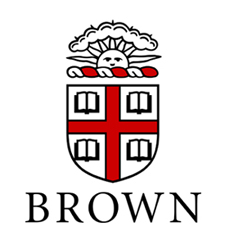Biographical note
John Carter Brown (known as J. Carter) was born to John Nicholas Brown and Anne S. (Kinsolving) Brown on October 8, 1934, in Providence, R.I. Along with brother, Nicholas, and sister, Angela, Brown grew up in a house filled with art, antiques, classical music, and the history of a prominent Rhode Island family.
In his early childhood years, Brown attended St. Michael's School in Newport, R.I. During World War II, Brown and his brother, Nicholas, attended the Arizona Desert School. Both went on to attend the Groton School for both middle and high school. After graduating from the Groton School at sixteen, Brown's parents felt that spending a year at the Stowe School before attending college would be beneficial due to his young age. Brown went on to attend Harvard University, graduating summa cum laude with a degree in history and literature in 1956.
Brown then made an unusual decision for someone in the arts, he decided to pursue a Master's in Business Administration at Harvard Business School, from which he graduated in 1958. Following his graduation, Brown spent several months studying under Bernard Berenson in Florence, Italy. Between 1958 and 1960, Brown also studied at the Ecole du Louvre in Paris and the Rijksbureau voor Kunsthistorische Documentatie in the Netherlands. Brown went on to attend the Institute of Fine Arts at New York University, where he received a Master's of Arts in Art History in 1961.
Following his graduation from NYU, Brown accepted a position in the office of National Gallery Director, John Walker. Three years later, in 1964, Brown became Assistant Director of the National Gallery of Art at the age of thirty. In 1969, Brown took over as the Director of the National Gallery of Art - a position he would hold for twenty-three years. As Director, Brown has been credited with helping to create the modern blockbuster exhibition with events such as King Tut, "Treasure Houses of Britain," Andrew Wyeth's "Helga" nudes, and "Circa 1492." During his tenure as director, the gallery also opened the East Building in 1978, introducing architect, I. M. Pei to the broader American public.
While serving at the National Gallery of Art and following his retirement in 1992, Brown was involved in numerous projects and organizations. Brown became the Chairman of the Commission of Fine Arts in 1971 and of the Pritzker Architecture Prize Jury in 1979. In 1993, Brown became the Chairman of Ovation, an arts cable network - an organization that continues to this day. For the 1996 Centennial of the Olympic Games, Brown became the Guest Director of an international exhibition entitled, "Rings: Five Passions in World Art." Brown was also the main author of a book with the same title. The exhibition became a $4.2 million blockbuster of objects from 44 countries, which included Munch's "Scream," Rodin's "Kiss," and Matisse's "Dance."
Brown served on over thirty boards and committees, and held office in over fifteen of these organizations including, the World Monuments Fund, the National Geographic Society, the John F. Kennedy Center for the Performing Arts, the Doris Duke Charitable Foundation, the Storm King Art Center, the John Carter Brown Library, the John Nicholas Brown Center, and the Brown University Corporation. He was also a fellow in the American Academy of Arts and Sciences, the American Philosophical Society, and the National Academy of Design.
In 1971, Brown married Constance Mellon Byers. They divorced two years later. Brown went on to marry Pamela Braga Drexel, with whom he had two children: John Carter Brown 4th and Elissa Lucinda Rionda Brown. The couple divorced in 1991. At the time of his death, Brown was engaged to Anne Hawley.
Brown was diagnosed with multiple myeloma, a terminal blood cancer, in the early part of the 21st century. During this time, he was at work on a book about himself and his father, though he never completed the manuscript. In June 2002, Brown died as a result of pulmonary failure in Boston.


